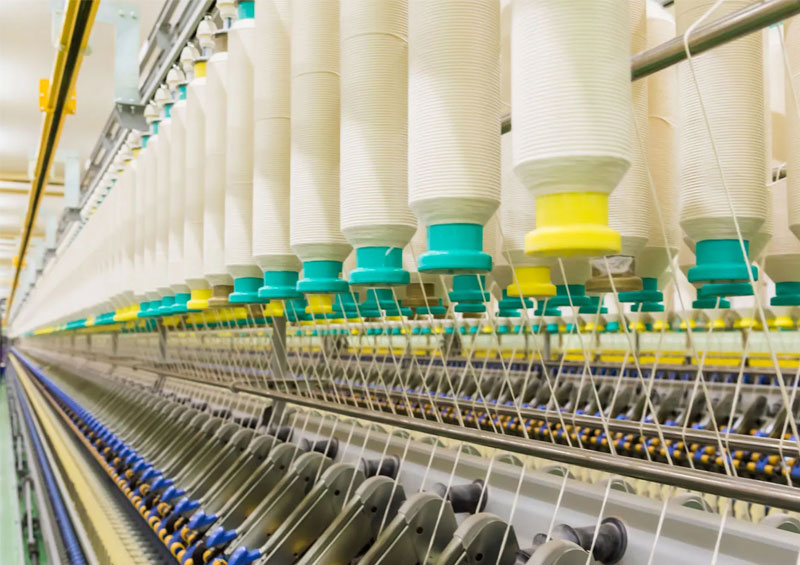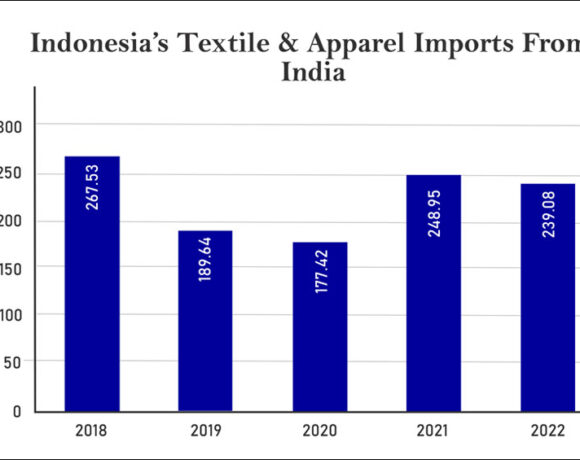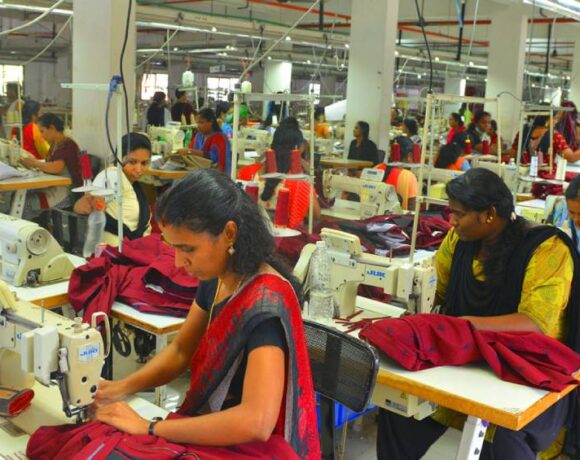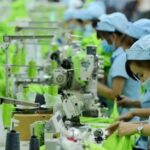Spinning Sector Looks For Relief, May Witness Gradual Revival In H2FY24

Having suffered multiple challenges in the last few quarters, the worst seems to be almost over for the domestic cotton spinning sector. While the industry players are cautiously agreeing to this fact, rating agencies like CareEdge Ratings and ICRA believe that the industry is likely to commence its northward journey during the second half of the currently financial year. In FY2022, Indian cotton yarn manufacturers achieved record-high profitability due to strong demand, lower domestic cotton prices compared to international prices and the US ban on cotton products from China’s Xinjiang region, which redirected some demand to India. However, the industry faced several headwinds in FY2023, such as disparity between domestic and international cotton prices, decline in global demand due to high inflation and recessionary pressures in developed economies and increased energy and supply chain costs. Consequently, India experienced its lowest cotton yarn exports in a decade, leading to a decline in sales volume and a contraction in the operating profitability margin for cotton yarn spinners in FY2023, which remained below the historical average.
As per CareEdge Ratings, while challenges are expected to persist in H1FY24, there are positive indications on the demand front for Indian cotton yarn in H2FY24. This recovery is expected to be supported by several factors. Firstly, the parity with international cotton prices will enhance the competitiveness of Indian cotton yarn. Secondly, there is a shift in demand from competing nations, which can create opportunities for Indian exporters. Additionally, the gradual relaxation of China’s zero Covid policy is anticipated to improve demand from China.
Moreover, the recovery in global demand from downstream industries will further contribute to the growth of the cotton yarn sector. The significant decline in cotton arrivals in Pakistan caused by floods during CS2022-2023 may create an opportunity for Indian cotton yarn manufacturers to cater to the gap in the market. Furthermore, the trade agreements with Australia and UAE are expected to benefit the Indian cotton yarn industry, opening up new avenues for exports.
In addition to export demand, the domestic consumption of cotton yarn is expected to contribute to its growth. India is projected to experience an increase in order flow for RMG and home textiles in H2FY24, as retailers begin restocking their inventories. This resurgence in demand from the domestic market will positively impact the demand for cotton yarn.
“Slowdown in demand is expected to continue in H1FY24 amidst macro-economic headwinds, while demand is expected to improve in H2FY24, thereby limiting growth in FY24. Overall, the Indian cotton yarn industry is expected to witness 5-7 per cent growth in sales volume during FY24, while average sales realisation of cotton yarn is expected to fall by 12-17 per cent followed by a decline in cotton prices. Subsequently, the Indian spinning industry will register a revenue de-growth of around 8-10 per cent, while the operating margin is expected to expand by 100-150 bps aided by higher capacity utilization, softening of cotton prices, coupled with the benefit of lower freight and power cost,” says Krunal Modi, Associate Director at CareEdge Ratings.
In its report, the rating agency ICRA expects that demand for the industry will improve by close to 10 per cent in volume terms in FY2024 on a yearly basis, primarily gaining through a shift in preference away from Chinese cotton and on expectations of demand improving for the spring/summer season in the US and EU regions. However, an expected moderation in cotton prices will lead to lower realisations, which is likely to translate into a 7 per cent YoY decline in revenues to around Rs 34,000 crore in FY2024.
Commenting on this, Kaushik Das, Vice President & Co-Group Head, Corporate Sector Ratings, ICRA, says, “Despite lower revenues, ICRA expects the operating margins of Indian cotton spinning companies to improve by around 50-100 bps to 11.5-12 per cent in FY2024. The spinners are expected to benefit from the operating efficiencies arising from higher volumes and lower logistics expenses as the blockages at the ports in various regions have started to ease, accompanied by a reduction in container freight rates. Nonetheless, profits and cash accruals of spinners are expected to be marginally lower in FY2024 compared to FY2023.”
“We have experienced one of the worst phases in many years. Higher cotton prices eroded the global competitiveness of Indian cotton textile value chain. We suffered heavily on the export front as our overall textile exports declined 23 per cent in FY2023. Indian cotton yarn lost its competitiveness in the global market and its exports decreased by 50 per cent during FY23 as compared to the previous year. Cotton yarn price has not increased in proportion to the increase in cotton price, forcing the spinning sector to slowdown the production. However, now with cotton prices coming down and the demand expected to improve in the near future, we may expect some signs of gradual revival, provided the industry gets the much needed policy support from the government, including removal of 11 per cent import duty on cotton,” states Ravi Sam, Chairman, Southern Indian Mills’ Association and Managing Director, Adwaith Textiles Pvt Ltd, Coimbatore.
“The second half of this fiscal should start helping the spinning mills to recover, provided the FTA with the UK, which is in the final stages of negotiation, is completed. This will improve the overall sentiment of the textile value chain. In the same way, the world demand for textiles should improve and we hope to increase our share of exports,” states T Rajkumar, Chairman, Confederation of Indian Textile Industry.
“No doubt, we have passed through a very difficult condition and hopefully things cannot go below this level. We expect improvement in the situation going forward, even as we may require some concerted interventions to correct some of the existing discrepancies,” avers S Jagadesh Chandran, Hon. Secretary, South India Spinners Association.
Meanwhile, SIMA, which represents textiles mills in southern states (where a majority of cotton spinning units are located),has approached Indian Banks’ Association (IBA) seeking financial support for highly stressed cotton spinning mills. Drawing the attention to the ongoing plight of the sector, SIMA has demanded one year extension for the repayment of principal amount, besides conversion of three-year loans under ECLGS into six-year term loans. Additionally, it has also sought financial assistance for mills facing severe stress on working capital.
SIMA has also approached the Tamil Nadu government seeking concession on power tariff, even as the state chief minister has requested the PMO office to take up the matter pertaining to removal of 11 per cent import duty on cotton, which is expected to boost the overall sentiment in a big way.
Higher cotton prices (also fluctuating) have adversely impacted the cotton value chain. Indian cotton price prevailed at Rs 51,000 per candy during September 2021, but escalated to around Rs 1.10 lakh per candy by April 2022 and then declined to around Rs 63,000 per candy in April 2023.Currently, the price is hovering around Rs 55,000 per candy as against the international price of Rs 53,000 per candy (83 cents/lb).
The steep fall in cotton as also yarn prices (yarn prices down Rs 10-20 per kg) in the last two months has eroded their margins resulting in erosion of working capital. The mills normally carry 2-3 months cotton and yarn inventories. As per SIMA, many of the spinning mills, especially in the SME sector, have currently been classified as SMA-1, SMA-2and NPAs, as they are not in a position to service their debts. Besides, the repayment cycle of the Covid loan has also commenced.















